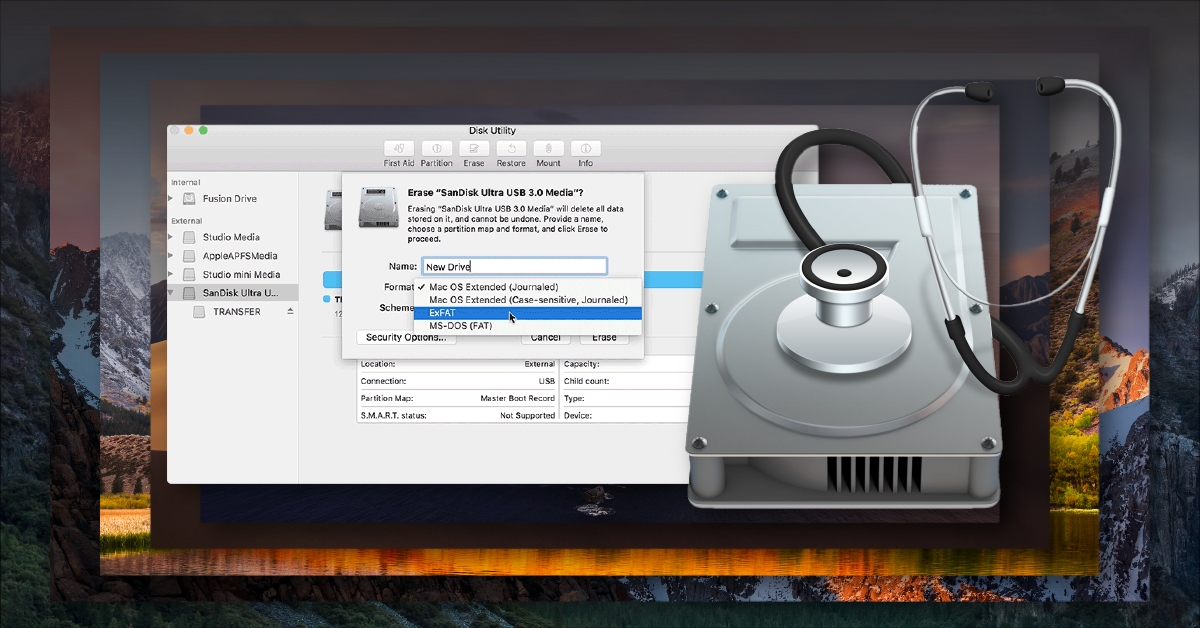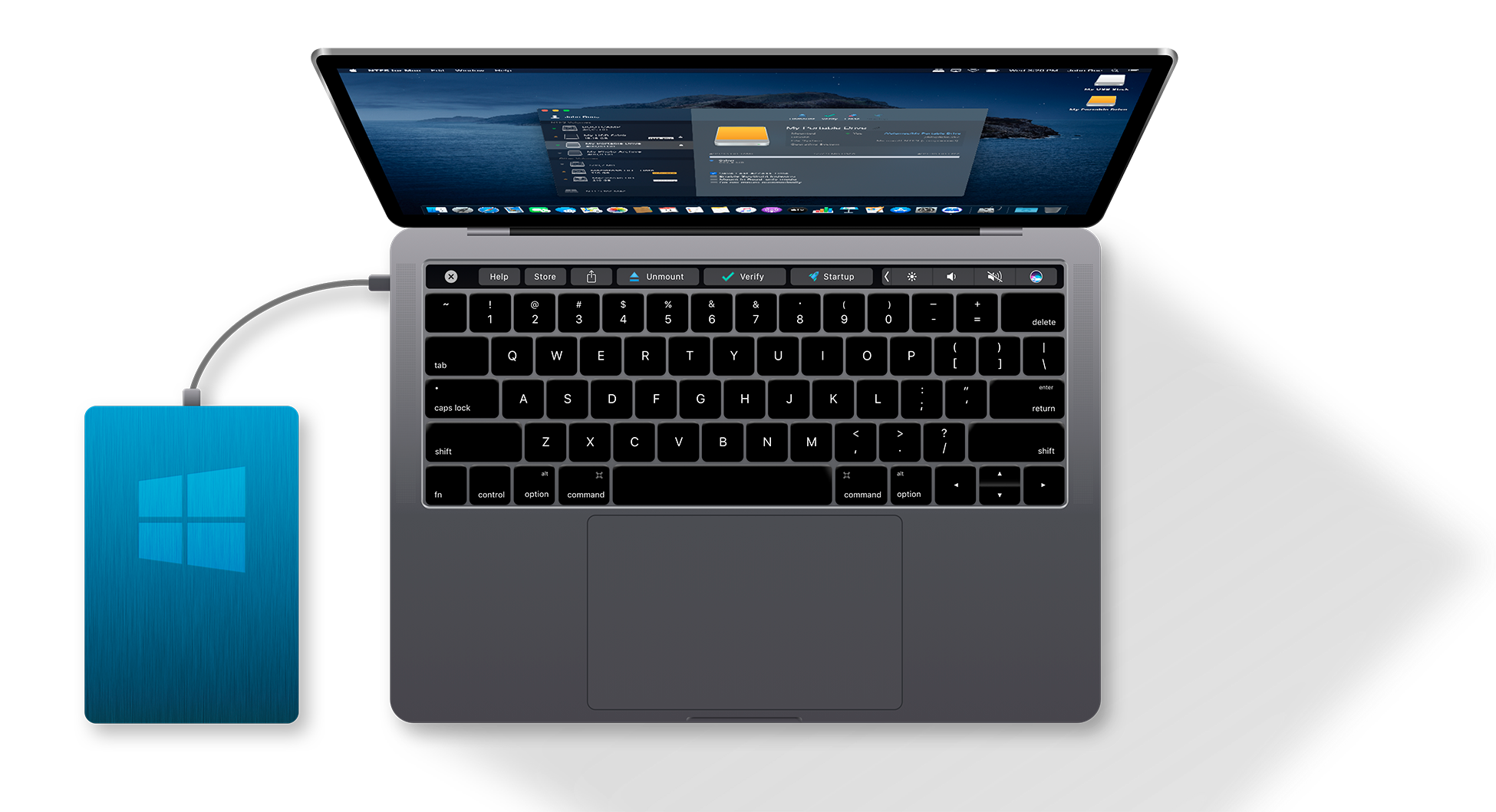

- FORMAT USB FLASH DRIVE MAC NTFS HOW TO
- FORMAT USB FLASH DRIVE MAC NTFS WINDOWS 7
- FORMAT USB FLASH DRIVE MAC NTFS PROFESSIONAL
- FORMAT USB FLASH DRIVE MAC NTFS DOWNLOAD
After installing MiniTool Partition Wizard on computer, select the USB drive partition from the disk map area and choose " Format Partition" from the action panel.

Download this free partition manager, and follow the detailed steps below: This tool can format USB to NTFS within 3 simple steps only even a fresh hand won't have any problem in its operation. As for a reliable free partition manager, MiniTool Partition Wizard is strongly recommended here.
Partition Wizard Formatįormatting via disk partition manager enjoys great popularity these days, for such professional disk manager is not only easy to use but also brings many possibilities in hard drive maintenance. You might be interested in 10 Situations Where External Hard Drive not Showing up & Solutions Way 1. No matter which method you choose, first of all, make sure your USB drive is successfully detected and recognized by Windows.
For Windows 7 or Windows 8, the operations are very similar or just the same. Tip: All of the following contents are based on Windows 10. You should stop making any further operations to the USB drive and then use MiniTool Power Data Recovery to recover data after format.
If you regret formatting a hard drive but no backup if available. Hence, we recommend transferring the important files you need to a safe location or backing up the USB drive before you format USB to NTFS. Formatting will definitely lead to data loss. 3 Ways to Format USB to NTFS in Windows 10/8/7īefore you start, keep these 2 points in mind: Can anyone help? Īre you troubled by USB drive formatting? In this post, we show you 3 best ways to format USB to NTFS in Windows 10/8/7. This works fine but I need to format it in NTFS and Windows format says it can't complete the format. See an example below: Q: I recently bought a Kingston 64GB USB flash drive. But the case is that some users do not know how to format USB or they are unable to do USB drive formatting.

For example, while copying some large files to a FAT32 USB drive, Windows gives an error message saying the file is too large for the destination file system or flash drive says not enough free space but there is plenty. However, in some cases, there is a necessity to format USB to NTFS. USB flash drives usually come with FAT32 file system.
3 Ways to Format USB to NTFS in Windows 10/8/7. If you have more questions about formatting USB devices, please Contact Us. So in a situation where you disconnect the USB while there is a write change taking place to the file system, there is a good chance you will corrupt the data. Meaning information can be writing to the flash drive at times in which you think the USB is idle. Also keep in mind that XP is a 15 year old operating system (at the time of this post) and Microsoft no longer supports the OS.Īs a closing note, the NTFS file system is not ideal for flash drives because it’s a dynamic file system. If there is a Windows XP user out there, they can download the plugin from Microsoft to allow an XP operating system to see the exFAT device without wanting to format it. Given that Mac computers are on the rise, your best option is to format the drive as exFAT. So you must decide to accommodate the Windows XP users or accommodate the Mac users. If you format it as exFAT all computers (Windows and Macs) will see the drive except for Windows XP. There are some plugins to help the Mac deal with NTFS but our experience proves those add-ins to be unstable. If you format as NTFS it works great on all Windows machines, but Macs can only read from the device, they cannot write to it. So what if you have a file bigger than 4GBs? Well, you have to decide what is the lesser of two evils. Typically these large files are either video files or restore image files (for restoring a computer operating system from a single image file). If you have a single file bigger than 4GBs then you must use NTFS or exFAT. If a single file is larger than 2GBs you need to have the device as FAT32. The one huge limitation with FAT and FAT32 is the single file size limitation. These two formats are the best file system for removable drives like flash drives because they support the quick disconnect function and chances are very slim you will destroy the device or files if you unplug the USB without using the Eject function (in Windows) or Un-mount function (in Mac).







 0 kommentar(er)
0 kommentar(er)
